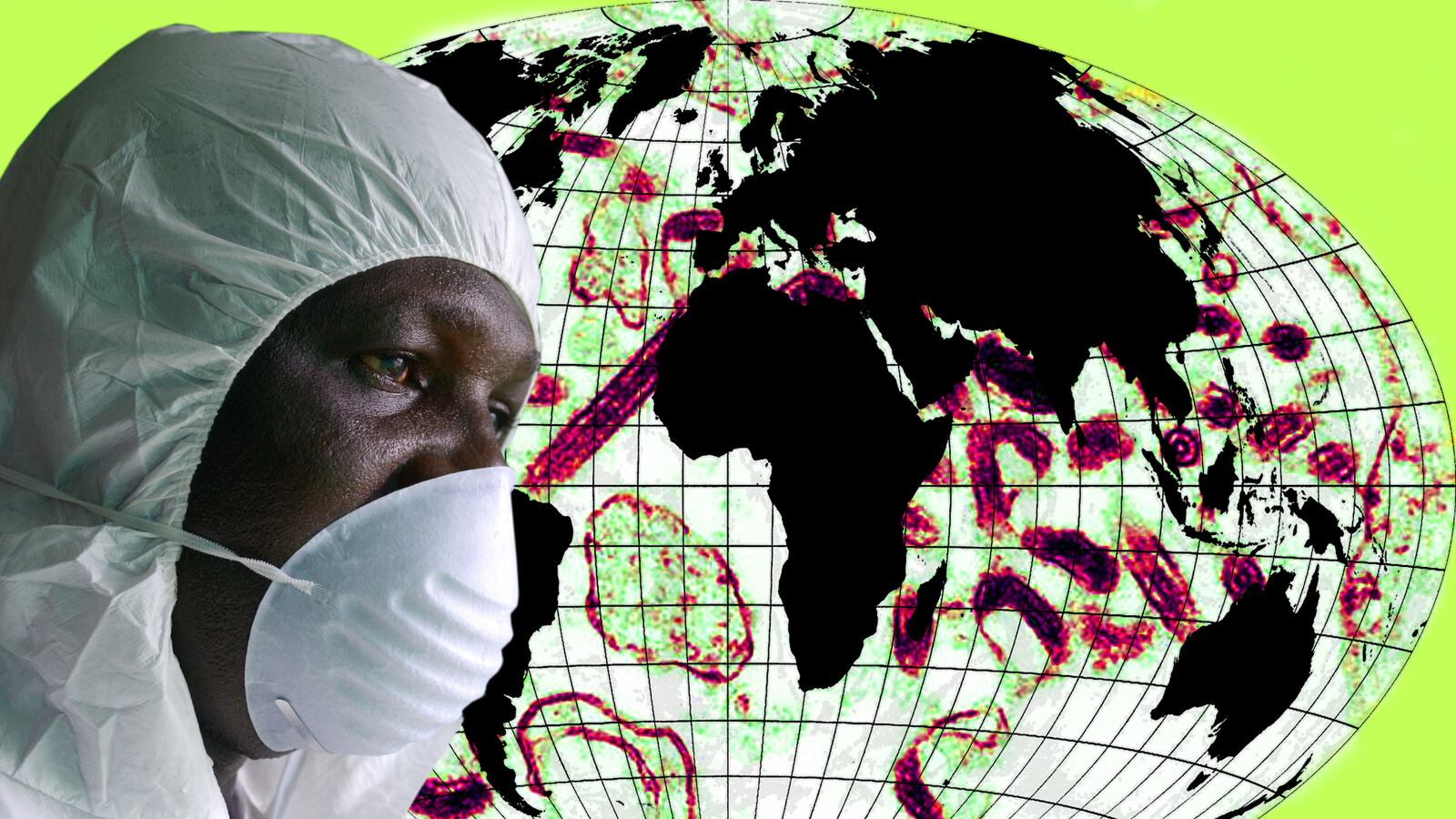“Countries have promised resources to fight Ebola. Which have delivered?”
It’s this question that inspired nonprofit ONE.org to create an Ebola tracker to figure out just that. While the Office for the Coordination of Humanitarian Affairs (OCHA), the UN, and the World Bank have data on the dollar figures associated with each pledge, no one had taken the time to figure out how much of those resources have actually made it to the ground in West Africa.
The answer, as of today, isn’t much.
Culling information directly from government representatives, press releases, technical bodies, and other research, ONE has zeroed in on what exactly the international relief effort in West Africa looks like, at this point. The tracker focuses on three specific forms of support: financing, health-care personnel, and in-kind contributions. This “deeper dive” into individual country’s commitments, ONE hopes, will persuade leaders to put their money where their mouth is.
In the financing portion, the numbers are particularly bleak. While China has pledged $122 million to the fight, it has thus far only disbursed 7 percent of that number. Of the $265 million pledged by EU Institutions, just 17 percent have reached the epidemic’s hot zone. Even private institutions, which most likely have less bureaucratic hurdles to deal with, have been slow to pull the trigger. The Silicon Valley Community Fund has thus far sent 0 percent of the 25 million pledged. At the Google/Larry Page Family Foundation, it’s the identical equation.
Erin Hohlfelder, global health policy director at ONE and the brains behind the tracker, says the tracker shows the importance in transparency. “It’s one thing to make a great pledge and commit to doing that,” says Hohlfelder. “But in the meantime, every day that goes by without these resources is a missed opportunity.” While progress has been made in the months since those pledges, there is much work still to be done.
The largest and longest Ebola epidemic of its kind, the crisis has resulted in an estimated 15,351 cases of Ebola and 5,459 deaths since March—numbers that the World Health Organization’s director has called a “vast underestimate” of the reality. While Liberia has shown progress in halting the epidemic’s spread, in continues to grow in neighboring Sierra Leone and Mali. According to October estimates from the World Bank, the epidemic could cost the West African countries affected upward of $32 billion in the next 24 months.
If more help doesn’t arrive soon, the worst may not be over.
If there’s a reason for delay in stopping the epidemic, she says, the lack of resources may be to blame. “This isn’t a nice-to-do development project, this is still an emergency,” Hohlfelder tells me. “While we wouldn’t expect 100 percent disbursal, a lot of these are pathetically low.”
The outbreak, which has now spanned eight countries and four continents, has largely centered on three countries in West Africa: Liberia, Sierra Leone, and Guinea. In some ways, the rapid spread of the virus there should not be surprising. Crippled by bitter decade-long civil wars, all three countries were in the midst of rebuilding broken health-care systems when the epidemic struck. Void of basic necessities like running water, many towns were struggling to meet even basic rudimentary health-care needs—a predicament that left them woefully unprepared for the onslaught of a major global health crisis.
Ebola hasn’t simply overwhelmed these health-care systems—it has decimated them. Women in need of support for childbirth have been turned away, leading to an increase in infant morality rates in a region with the some of the highest numbers in the world. Kids suffering from malaria or extreme diarrhea are now too often left without medical care. Life-saving vaccines for those illnesses and others are—without enough medical workers to disburse them—going unused.
It’s safe to say that restoring peace in the health-care systems of these three countries will be a marathon, not a sprint. But in order to commence rebuilding them from the ground up, the world must first put out the fires of this current epidemic. As leaders across the world continue to assert, the war is far from won.
At a press conference last week, Liberian President Ellen Johnson Sirleaf said that the progress her country has made may be damaging. “Our government remains concerned that progress in this battle will lead to complacency on the part of the international community,” said Sirleaf. “We must not interpret gains as an outright victory—nothing could be more dangerous.”
Head of the UN Mission for Emergency Ebola Response (UNMEER) Anthony Banbury said this week in Washington that containing the epidemic still calls for a “tremendous increase” in resources on the ground. “We are far, far away from ending this crisis,” said Banbury. “There is a long battle ahead of us.”
UN Secretary-General Ban Ki-Moon echoed these remarks at another meeting in Washington D.C. on Wednesday. After acknowledging that there has been a “bend in the curve” and a reason to hope, he warned against inaction. “We need more international responders—trained medical teams and volunteer health workers—especially in remote districts,” said Ban. “I am asking the international community to continue their support. Our experts say that we need to have at least fivefold strength and support, because, still, the international response is outpaced by this Ebola spread.”
Margaret Chan, director of the World Health Organization, followed Ban’s remarks. “We must not forget—Ebola virus is a formidable enemy. Yes, we are seeing some early signals of hope. Cases are stabilizing. But as Mr. Secretary-General was saying, we are also seeing some new areas where they are reporting new cases,” said Chan. “We must maintain our vigilance. Complacency would be our enemy. And in order to get it to zero, we have been successful in bending the curve a bit, but we need to continue to do more to get to zero.”
Inspired by this, the United States urged world leaders to raise $100 million in additional funds for West Africa’s debts, allowing them to “reinvest” in health and other public programming.
Even in the United States, which is leading the pack financially (having disbursed 43 percent of the $572 million pledged thus far), concern for the global health crisis is waning. At an important Ebola meeting on Capital Hill last week, Missouri Sen. Claire McCaskill was shocked to find it half-full. “Fascinating. Empty seats and no cameras for hearing on Ebola & public health…” she tweeted.
As the holidays approach, Hohlfelder worries that concern will further dwindle. “I think it will be really critical in the weeks to come,” she says. “Even if the attention spans continue to wane, we’re hopeful that we can do our small part and remind people that this crisis isn’t over—and even when it ends there will still be a rebuilding effort on the ground.”






